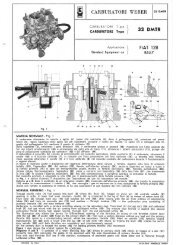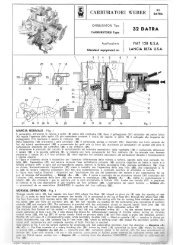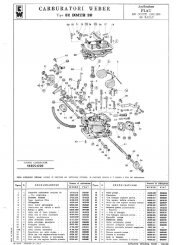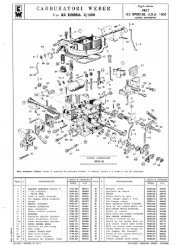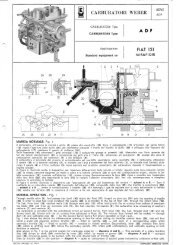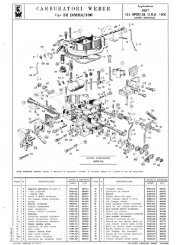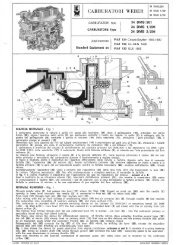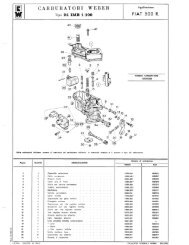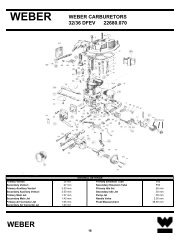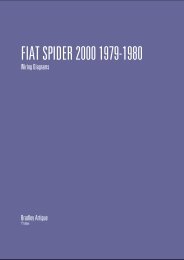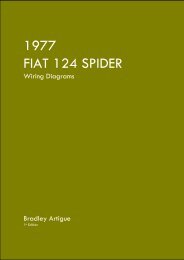Engine Maintenance and Modification Bradley Artigue
FIAT 124 Spider Engine Maintenance + Modification - Artigue.com
FIAT 124 Spider Engine Maintenance + Modification - Artigue.com
- No tags were found...
Create successful ePaper yourself
Turn your PDF publications into a flip-book with our unique Google optimized e-Paper software.
FIAT 124 Spider<br />
<strong>Engine</strong> <strong>Maintenance</strong> + <strong>Modification</strong><br />
L<br />
K<br />
J<br />
N<br />
2<br />
M<br />
3<br />
F<br />
4<br />
5<br />
1<br />
Figure 6: Diaphragm-type accelerating pump – 1 Control lever, 2 Pump spring, 3 diaphragm return spring,<br />
4 Cam lever, 5 Roller, F Throttle, J inlet valve, K Delivery valve, L Pump jet, M pump drain jet, N Pump<br />
diaphragm<br />
4.6 Cold Starting<br />
On a cold morning your FIAT may be hard to start. If things are working properly you will<br />
do one of three things to set the cold start device. You may pull a knob under your<br />
dashboard. This knob is connected to a cable that moves a metal plate over the top of<br />
your carburetor. If you have a later model FIAT (specifically those fitted with the ADHA<br />
or ADFA carburetor) you might press the accelerator to the floor before starting the car<br />
<strong>and</strong> then release it. This sets a semi-automatic, water-controlled mechanism in place.<br />
This mechanism moves a metal plate over the top of your carburetor as well. Finally,<br />
you might do nothing, meaning that you have an electric choke on a non-st<strong>and</strong>ard<br />
carburetor. In case you’re wondering the electric choke also moves a metal plate over<br />
the top of the carburetor. In all types this metal plate “chokes” the carburetor,<br />
restricting the amount of air entering the engine but having no effect on the amount of<br />
fuel. This causes a very rich condition, conducive to cold starting.<br />
In figure 7 a simple choke is depicted. A plate moves upward, restricting airflow into the<br />
barrel but not fuel. Once engine operating temperature is reached the choke is disabled<br />
<strong>and</strong> normal airflow returns. Improvements in chokes over the years made them more<br />
convenient <strong>and</strong> efficient. An automatic choke will vary the position of the restricting<br />
plate as engine temperature increases, until the choke plate is fully open at normal<br />
operating temperature. Weber refers to this as an “anti-flooding device” as flooding an<br />
engine will occur if a choke is left fully “on” during normal temperatures.<br />
15



